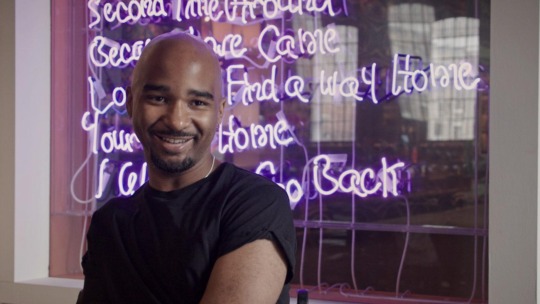
Dear BURNAWAY,
I’ve been interning in a large, successful art gallery for the past five months. While it’s been a good learning experience and very eye-opening in a lot of ways, it has also made me feel really weird about my own work. Because I’ve seen so much art come in and out, I keep wondering if I’ve even got a fighting chance. There is so much art just sitting around in that place, begging for a home. Why should I keep making art when there’s already so much out there trying to be sold? I know that seems pessimistic to you probably, but I just don’t know where I fit into all of it. Or if I there’s even room for me. Feeling down, and would love some advice on how to not feel this overwhelmed.
Sincerely,
Drowning in Art
Dear Drowning,
Thank you so much for writing in with this question. It’s an important one to talk about, and hopefully I can offer you some words that will help you get through these feelings of oversaturation.
First, you’re not alone. The work-life balance is something thing most of us adults struggle with, and there seems to be an infinite variety of fresh and unique ways to imbalance the equation. In your case, your work is affecting your life by affecting your art. And that needs to be nipped in the bud, little daisy, or else you’re going to continue to suffer. So let’s get serious for a second.
The world is a really big place, and so is the art world. And here’s one thing I can promise you when it comes to art: there is never enough. There is so much and there is never enough. There are only two infinite wells I’ve ever come across: love and art. Neither will ever be too full; neither will ever run dry.

That said, I can sympathize with the suffocating feeling of inundation. For years, I wouldn’t let myself write because I was so fully convinced that I had nothing new to say, nothing to add to the already simmering, rich, beautiful pot of novelists, essayists, and journalists who were doing such a stellar job of saying what needed to be said. I would haunt myself with the same question: why does the world need another writer? I should be a nurse; the world needs nurses! Or a social worker, a teacher, a veterinarian! Anything but a writer.
A big part of that mindset came from walking around colossal university libraries, gawking at all the books that hadn’t been touched in decades. Countless words, thoughts, and observations upon which neither I nor the majority of my classmates would ever lay eyes. I read voraciously and passionately, yet I knew I could only ever tackle a minuscule fraction of it all. In the evenings, I would footslog through the library like it was a mausoleum. I solemnly paid my respects to the neverending rows of book spines packed tight like little coffins. I thought, Why on earth would I try to add to this? It got worse when I started to spend more and more time online, slowly realizing the multitude of words that were flooding in second by second.
But at some point, libraries started to feel less like mausoleums and more like sanctuaries. Bookstores and blogs felt more like candy shops. Something finally clicked in me. All those words I saw, they weren’t mine. Period. And just like all the paintings you’re seeing at the gallery, they aren’t yours. They don’t express your particular perspective on things or your story, which is, believe it or not, very important.

To quote one Mrs. Obama:
“The arts are not just a nice thing to have or to do if there is free time or if one can afford it. Rather, paintings and poetry, music and fashion, design and dialogue, they all define who we are as a people and provide an account of our history for the next generation.”
Art cannot stop, and it’s your responsibility as a creator to see to its thriving, fruitful continuation. If we let art stop, then our culture, our time, our history might all disappear. Poof!
So while I understand that working in a bustling gallery is difficult because you’re constantly faced with just how much art is out there, you can’t let it keep you from adding to the story of our time. We need your art, just like we needed Van Gogh’s and Picasso’s and Bourgeois’s and all the rest of them. Not only because we need your voice, but also because making art means that you’re also reflecting on yourself and your surroundings; you’re communicating, empathizing, and above all, thinking. You’re thinking about some actual bigger-than-us things. And that, my sweetness, is hugely important. Because in this crazy, bizarre, unpredictable world, what we can never have enough of is thoughtful souls.
Got a question for Sara? Send an email to [email protected].
Sara Estes lives in Nashville and is the lead visual art writer at The Tennessean. She also works with David Lusk Gallery and Cumberland Art Conservation. Estes is the former gallery coordinator for the Carl Van Vechten and Aaron Douglas Galleries at Fisk University. She cofounded and curates the Nashville-based contemporary exhibition space, Threesquared.




